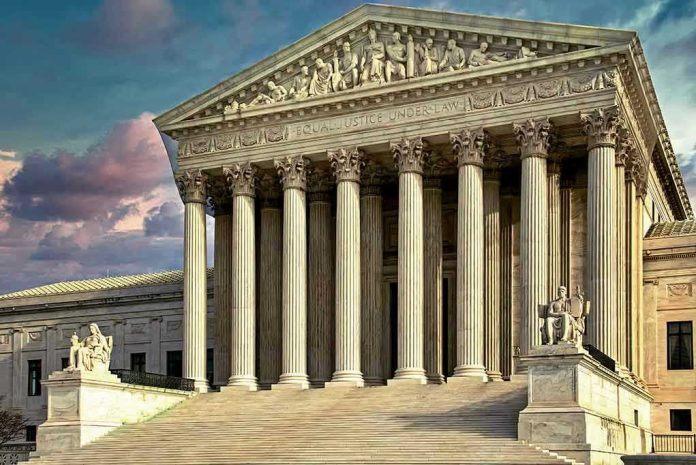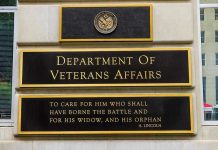
The moment the Supreme Court’s lights begin to flicker, the nation realizes just how fragile the machinery of American justice really is—especially when political brawling in Congress pushes the judiciary to the financial brink.
Story Snapshot
- The 2025 government shutdown has drained the judiciary’s reserve funds, halting most Supreme Court operations.
- Only constitutionally required court functions will continue; most staff are furloughed as of October 20, 2025.
- Political gridlock and failed negotiations between Congress and the President triggered this historic impasse.
- The Supreme Court’s vulnerability exposes deeper issues in the separation of powers and public trust in government.
Shutdown Fallout: When Even the Supreme Court Runs on Empty
Gridlock in Congress typically means delayed paychecks and closed parks; the impasse has triggered a crisis that reaches the highest bench in the land. For only the second time in modern history, the Supreme Court and federal judiciary have run out of money, their operations pared down to the constitutional bone. This was not supposed to happen. Reserve funds and special appropriations have always buffered the courts, but as lawmakers bickered, those reserves finally ran dry. The judiciary’s October 17 announcement was blunt: if Congress doesn’t act, limited operations begin October 20, with most staff sent home and only the most essential cases proceeding.
The Supreme Court’s vulnerability to funding gaps was once unthinkable. Past shutdowns, including the 2018–2019 episode, never lasted long enough to exhaust judicial reserves. But this standoff—fueled by failed Senate votes, clashing funding bills, and headline-grabbing meetings between President Trump and congressional leaders—has proved more relentless. Neither the Republican House plan nor the Democratic Senate alternative survived procedural crossfire. As October 1 arrived, the federal government ground to a halt, and the judiciary’s clock started ticking. By October 20, contingency funds had dried up, and the courts entered a mode unseen in living memory.
Partisan Stalemate and the Anatomy of Shutdown Politics
Behind the headlines is a classic Washington standoff, with each side blaming the other for the budgetary train wreck. Senate Majority Leader Chuck Schumer and House Minority Leader Hakeem Jeffries insisted on preserving health insurance subsidies and increasing foreign aid, while Speaker Mike Johnson and President Trump championed stricter spending caps and border policies. The resultant legislative trench warfare left the judiciary as collateral damage. Federal judges will keep their seats, but the machinery that underpins American justice—clerks, researchers, federal defenders—has been largely silenced. Even electronic filing systems survive on borrowed time, with only jury programs insulated by separate funding streams.
The judiciary’s predicament highlights a constitutional irony: while the courts must function under Article III, their ability to pay staff and keep lights on is at the mercy of Congress. Scholars have long warned of this structural weakness, but in 2025, the warning moved from academic papers to front-page headlines. The judicial branch, designed to operate above the political fray, finds itself dragged onto the battlefield, its independence undercut by the same appropriations process that funds the DMV and the Bureau of Land Management.
Justice Delayed: The Ripple Effects of a Court on Life Support
The immediate consequence is a judiciary on life support. Civil and criminal cases not deemed essential face indefinite delays, creating a backlog that could ripple for years. Litigants, attorneys, and defendants are left in limbo. The legal sector—already an ecosystem of deadlines and schedules—faces chaos. For the court staff, the message is blunt: unless your job is “excepted” under the Anti-Deficiency Act, stay home. For federal employees and their families, missed paychecks add financial stress to the uncertainty of government service.
The broader damage is harder to measure. Each day the courts operate at half-speed, public trust in the impartial administration of justice takes another hit. Businesses waiting for legal clarity, individuals seeking redress, and communities relying on the courts for order all feel the effects. Legal experts warn that prolonged shutdowns erode the credibility of the judiciary, feeding cynicism about whether government institutions can be relied upon to do their jobs. The current standoff, far from being a mere budgetary squabble, has become a test of the nation’s commitment to the rule of law.
Permanent Fix or Perpetual Crisis? The Search for Solutions
Calls for reform have grown louder as this crisis unfolds. Some legal scholars and practitioners argue that the judiciary needs a permanent, insulated funding mechanism—one that cannot be held hostage to political brinkmanship. Others, mindful of the constitutional balance of power, warn against any move that might weaken congressional oversight. The one point of agreement: what happened in October 2025 exposes a vulnerability that cannot be ignored. If American justice is truly a pillar of democracy, it must be protected from the vagaries of short-term politics.
Whether Congress can break the deadlock remains to be seen. The judiciary’s leaders continue to plead for action, while the political class calculates blame and public relations fallout. For the millions who depend on timely, fair justice, the drama in Washington has very real—and very unsettling—consequences. The Supreme Court, once thought untouchable, now serves as a cautionary tale for every institution that relies on political goodwill to keep its doors open.
Sources:
2025 United States federal government shutdown – Wikipedia
Judiciary Funding Runs Out: Only Limited Operations Continue – U.S. Courts









